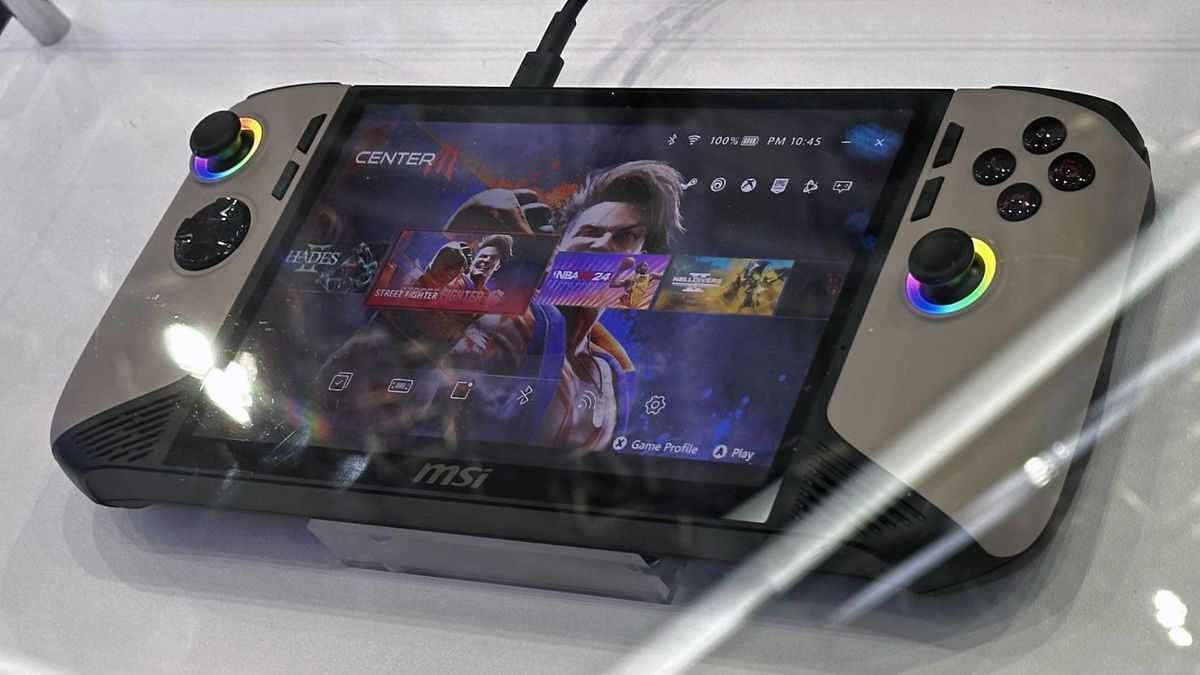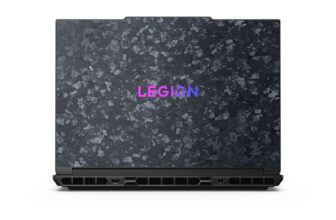The MSI Claw 8 AI Plus is an upcoming Windows gaming handheld that will feature the latest Lunar Lake processor in a redesigned chassis, potentially yielding a new titan amongst competitors.
It’s no secret that I wasn’t fond of the original MSI Claw, as I called it a “nightmare” in my 2.5 out of 5 star review. But only three months after its launch, MSI unveiled its successor shortly before Computex in June through an exclusive with The Verge.
We’re getting closer and closer to its eventual release date now that Lunar Lake PCs are available for pre-order (officially available on September 24) meaning we could hold the MSI Claw 8 AI Plus in our hands any day now.
Without further ado, here’s everything we know about the MSI Claw 8 AI Plus, including details on its release date, price, specs, design, and more.
MSI Claw 8 AI Plus: Specs
| Handheld | MSI Claw 8 AI Plus | MSI Claw |
|---|---|---|
| Processor | Intel Lunar Lake | Intel Core Ultra 5 135/7 155H |
| Display | 8-inch 1,920 x 1,200-pixel 120Hz display | 7-inch 1,920 x 1,080-pixel 120Hz display |
| RAM | 16GB or 32GB LPDDR5X-8553 | 16GB LPDDR5-6400 |
| Storage | M.2 2280 SSD | 512/M/1TB.2 2230 SSD |
| Battery | 80Wh | 53Wh |
| Ports | 2 Thunderbolt 4, microSD, audio jack | 1 Thunderbolt 4, microSD, audio jack |
| Weight | TBD | 1.48 pounds |
| Size | TBD | 11.6 x 4.6 x 0.85 inches |
MSI Claw 8 AI Plus: Release date
MSI unveiled the Claw 8 AI Plus in-depth at IFA Berlin 2024 (via VideoCardz) and confirmed that sales for the device would begin early 2025. We initially believed it would launch in September alongside Intel‘s Lunar Lake chips, but it seems as if the company is maintaining a yearly cycle after all.
Considering the original MSI Claw launched in March of this year, we could see it released the same month in 2025. The company has only just started producing these devices, so a pattern hasn’t necessarily been established yet, but we’ll see it early 2025 nonetheless.
MSI Claw 8 AI Plus: Rumored price
The MSI Claw launched at a base price of $699 for its weaker Intel Ultra 5 135H-powered model with 512GB of storage. Its Intel Ultra 7 155H model is either $749 for 512GB of storage or $799 for 1TB of storage.
In other words, MSI came in hot with its pricing. Comparatively, the highest end model of the Asus ROG Ally launched at $699, and it wasn’t until the mid-cycle refresh Ally X that it reached $799. Even the Lenovo Legion Go, which impressed with its detachable joy cons and 2K panel, cost $749 for its 1TB model.
We have no information on the Claw 8 AI Plus’ price as of yet, but we’re hoping MSI doesn’t shoot above $799, as it will quickly find itself buried by the Ally X’s lower cost.
However, considering it’s offering up to 32GB of LPDDR5X-8,553 RAM, its highest end model might be more expensive regardless.
MSI Claw 8 AI Plus: Design
The major difference between the MSI Claw 8 AI Plus and the previous iteration is that it’s upgrading to an 8-inch display with a 16:10 aspect ratio (compared to the Claw’s 7-inch panel at 16:9), which means it’s going to be a bit larger.
Rather than an all-black system like the original, it features an alluring blend of silver with a black trim alongside the edges of the display that curves out into the speaker system notches at the bottom.
The MSI Claw weighed 1.48 pounds and measured 11.6 x 4.6 x 0.85 inches. We don’t know how much the upcoming model will weigh, but for comparison, the 8.8-inch Lenovo Legion Go weighed 1.88 pounds, so we’re at the very least expecting it to be lighter than that, but heavier than the original.
However, the 7-inch model of the MSI Claw isn’t going away, as it’s being upgraded with Lunar Lake processors and will be sold alongside the 8-inch model. Otherwise, the 1,920 x 1,200-pixel 120Hz panel is remaining the same between generations.
We don’t know how much storage it will offer, but we expect models available for 512GB and 1TB of SSD storage like the original, although it has upgraded from M.2 2230 to 2280.
On the side of ports, it will feature two Thunderbolt 4, a microSD slot, and an audio jack. This is pretty similar to what the original had, except it had one less Thunderbolt 4.
MSI Claw 8 AI Plus: Performance
The MSI Claw 8 AI Plus is powered by the latest Intel Lunar Lake chips, which has integrated graphics being referred to as Battlemage. It’s a next-gen Xe2 GPU that features 1.5x faster performance than Meteor Lake’s integrated graphics.
There are nine available chip types with the new Intel Core Ultra 200V series, and we have no clue what the MSI Claw 8 AI Plus will feature. However, this shouldn’t matter much, as there’s only two different integrated graphics types: Intel Arc 130V and 140V. Intel Core Ultra 5 200 processors will feature 130V, while Ultra 7 200 chips will have 140V.
Considering the original Claw launched with options between Ultra 5 and Ultra 7, that could remain the case here, meaning both will be available nonetheless.
But what can we expect out of performance? During IFA Berlin 2024, Intel claimed that its Xe2 GPU architecture has full support for ray tracing and features around 31% faster graphics when compared to Intel Core Ultra 7 155H across 45 games.
We also saw Intel pit an Intel Core Ultra 200V demo unit against a machine with an AMD Ryzen AI HX 370 chip. The former achieved 70 frames per second with highs up to 90 fps, while the latter hovered at around 60 fps.
These tests were curated by Intel itself, so we’ll have to see whether or not these numbers hold up in our in-house tests, but we’re excited nonetheless.
MSI Claw 8 AI Plus: Battery life
The MSI Claw 8 AI Plus is making an excellent choice in its upgrade to an 80Wh battery when compared to the 53Wh battery seen on the original Claw. However, longevity is about more than just battery size, as the efficiency of the machine itself is also important.
During IFA Berlin 2024, Intel claims that when using the same OEM and chassis, a laptop powered by Intel Core Ultra 7 268V while running UL Procyon lasted 20.1 hours compared to the Qualcomm X1E-80-100, which only lasted 18.4 hours.
That’s a huge claim, especially when considering the battery life we’ve seen out of Qualcomm laptops have been unbelievable thus far. Examples include the Dell XPS 13 9345 (19:01), Asus Vivobook S15 S5507 (12:53), HP EliteBook Ultra (16:01), Lenovo Yoga Slim 7x (14:01), Microsoft Surface Laptop 7th Edition (15:44), and Microsoft Surface Pro 11th Edition (12:11).
We consider 10 hours of battery life to be good, but Qualcomm has consistently smashed those expectations with its latest launches. For Intel to suggest its Lunar Lake chips can do better is exciting, and we cannot wait to test it for ourselves.






